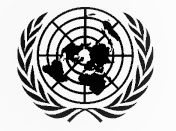
The Convention on Cluster Munitions (CCM) prohibits under any circumstances the use, development, production, acquisition, stockpiling and transfer of cluster munitions, as well as the assistance or encouragement of anyone to engage in prohibited activities. The text of the Convention is available for download in the six official UN languages: عربي, 中文, English, français, русский, español.
A cluster munition is a weapon consisting of a container or dispenser from which many submunitions or bomblets are scattered over wide areas. Many submunitions are unreliable and fail to explode, thus creating a potential humanitarian impact on civilians both during as well as long after the conflict ends.
The Convention provides a comprehensive international response to the suffering caused by the use of cluster munitions and their remnants, to prevent the proliferation and future use of these weapons.
The Convention was opened for signature in Oslo on 3 December 2008 and entered into force on 1 August 2010.
Documentation from current and past meetings
Responsibilities entrusted to the Secretary-General of the United Nations
Under the terms of the Convention, a number of responsibilities have been entrusted to the Secretary-General of the United Nations, including:
- Collection and dissemination of transparency reports by and to the States Parties (Article 7);
- Facilitation of clarification of compliance (Article 8); and
- Convening Meetings of States Parties (Article 11) and Review Conferences (Article 12).
Furthermore, in accordance with the relevant GA Resolution(s), the Secretary-General is “requested to render the necessary assistance and to provide such services as may be necessary to fulfill the tasks entrusted to him by the Convention on Cluster Munitions.”
For information on the implementation of the Convention, visit the website of the CCM Implementation Support Unit.

